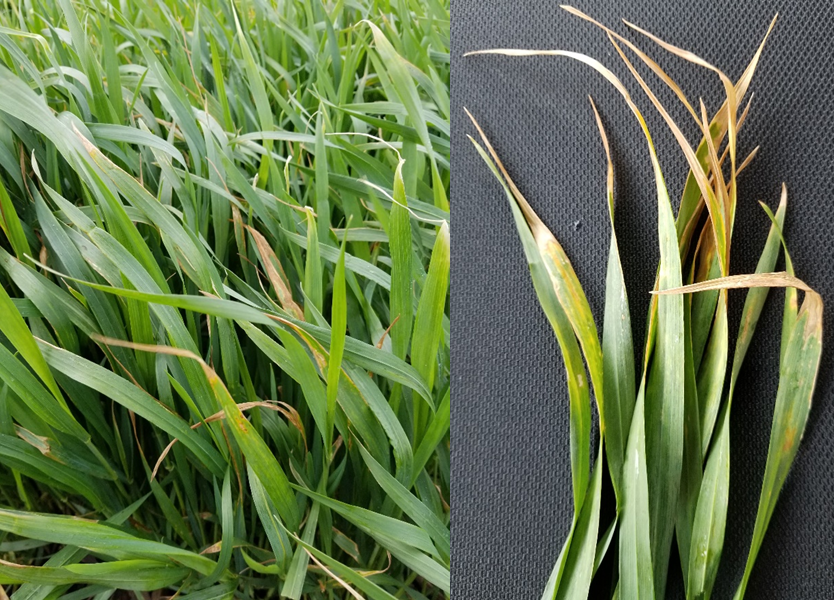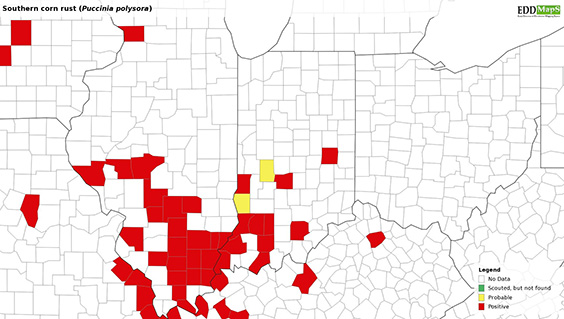
Wheat has greened up and is actively growing across Indiana (except during these last few cold spells).

Wheat has greened up and is actively growing across Indiana (except during these last few cold spells).

Planting has begun to ramp up here in Indiana. I want to remind you of a few resources for monitoring field crop diseases.

Each year the members of the Corn Disease Working Group and the North Central Regional Committee on Soybean Diseases (NCERA 127) with the support of the United Soybean Board establish ratings on the efficacy of fungicides for corn and soybean diseases.

The last two weeks have shown an increase in samples for stalk rots and ear rots/moldy grain at the Purdue Plant and Pest Diagnostic Laboratory, which is signaling that fields are in the middle of or nearing the end of harvest. Dr. Darcy Telenko has provided two great resources (Stalk Rots Getting You Down? & Ear and Stalk Rots) to help in identifying stalk rot diseases and how to manage them. Determining the type of pathogen is paramount in determining your management options, such as selecting hybrids with resistance to a particular pathogen, determining if/what pesticides will protect your crop, and what cultural practices will help mitigate the damage done (if only for future years). Multiple corn leaf spot or root rot pathogens also infect the stalk and/or ear. Other ear rots can move in due to insect feeding, exposed ear tips subject to the environment, or rain getting underneath[Read More…]

Tar spot of corn has been a concern this season after the localized epidemics we experienced last year in Indiana.

The time has come to start scouting corn for ear and stalk rots. This will aid in making assessments about field harvest order and if there is a risk of mycotoxin contamination.

Soybeans We are starting to see a number of diseases in soybean across Indiana. This week in our plots in both northern and southern Indiana initial foliar symptoms of sudden death syndrome are making an appearance. In addition, we continue to see frogeye leaf spot and Septoria brown spot – the levels of both of these diseases were very low and our soybean are about R4 (beginning pod) to R5 (full pod). I suspect that if we continue to receive intermittent rain, we might start to see a bit more disease in soybean. Corn Tar Spot – We have confirmed 11 counties with active tar spot as of August 28 for the 2019 season. These counties all had a previous history: Elkhart, Jasper, Kosciusko, La Porte, Lagrange, Lake, Marshall, Noble, Porter, Pulaski, and St. Joseph (figure 1). I have included the 2018 tar spot map from Indiana for your reference[Read More…]

Southern Rust is now confirmed in 11 counties in Indiana.

Southern Rust was confirmed in Gibson County this week.

Southern Rust: Southern rust was officially confirmed in Posey County this week. We currently have two positive counties and one probable in Indiana.
© 2026 Purdue University | An equal access/equal opportunity university | Copyright Complaints | Maintained by Pest&Crop newsletter
If you have trouble accessing this page because of a disability, please contact Pest&Crop newsletter at luck@purdue.edu.